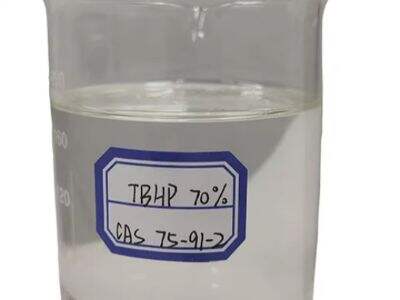What are Polymers?
Polymers are unique and quite incredibily materials we see and use every day. You find them in lots of products — in plastic bags that hold our food, in containers that hold our leftovers, even in the fabric in our clothes. Manufacturers use a process known as polymerization to produce these useful polymers. But this process is less a mixing of things together and more a linking of small pieces called monomers (they're like tiny building blocks) to form long chains or networks of materials. Benzoyl peroxide is actually one of the key ingredients in all of this polymer making.
What is Dibenzoyl Peroxide?
Dibenzoyl peroxide is a clear, stable solid that is soluble in some solvents like acetone. This chemical is a type of organic peroxide, which means it has a bond between oxygen atoms that can split apart easily. When this bond is ruptured, free radicals are formed. The produced free radicals are very active and that aids in the initiation of the polymerization process necessary to create polymers.
What Is Dibenzoyl Peroxide?
The dibenzoyl peroxide undergoes a process called homolysis during the polymerization. That is the moment when the bond that links the two oxygen atoms within the dibenzoyl peroxide molecule is broken, so two benzoyloxyl radicals form. These radicals are highly reactive and can initiate the polymerization of a variety of monomers (both styrene- and vinyl acetate-based monomers, for example) that are also used to create polymers.
Effects on Polymers
Here are some effects of using dibenzoyl peroxide in the polymerization process on the performance of the final product. It has a couple of good consequences such as accelerating the polymerization. That means this reaction occurs quicker, reducing the time necessary to develop these materials. This is especially useful within factories, where time is crucial to ensure production goals are met.
Dibenzoyl peroxide can also help make the polymer chains longer and stronger along with speeding up the process of polymerization. This is helpful in making materials that require high hardness and stiffness, such as thermosetting polymers. These kinds of polymers are made to cure, to be solid, and to stay that way when they're made, which is good for a number of uses.
But it’s equally useful to understand that dibenzoyl peroxide can also pose challenges. This can cause bubbles or holes to form in the polymer, for example. This would create bubbles, weakening the material or making it unsuitable for certain uses, which is why manufacturers must pay close attention to how they utilise dibenzoyl peroxide in their processes.
Making Polymers Stronger
The most advantageous use of dibenzoyl peroxide in polymerization is its role in enhancing strength. It means the polymers can withstand damage from environmental factors, such as heat, moisture or sunlight. By adding dibenzoyl peroxide in its polymerization process, manufacturers can develop materials that are more stable and long-lasting.
For instance, when manufacturing pipes to carry water, including dibenzoyl peroxide in the production process makes these pipes more resistant to damage from ultraviolet rays. This minimizes potential pipe breakdown or failure over time, which is essential for reliable water supply.
High-Performance Polymers with Dibenzoyl Peroxide
The dibenzoyl peroxide is an important member of the class of compound important in polymerization for forming strong, performance-based polymers and widely used in aerospace and automotive applications. Adding this chemical during polymerization enhances the strength and durability of the materials. This means they are more durable and can perform better in different situations.
One example of this would be dibenzoyl peroxide, which is used for composite manufacture. These composites consist of carbon or glass fibers or similar fibers embedded in a polymer matrix. Here, dibenzoyl peroxide serves as a curing agent. This acts as a glue, holding the fibers together to create a lightweight yet strong material suitable for use in aircraft or other vehicles.
Dibenzoyl Peroxide Future Uses
In an effort to unlock new applications of polymers in many different fields, there is an increasing interest in developing new polymer composites. Dibenzoyl peroxide will probably be of significance in the synthesis of these novel polymers as well in the future.
One promising application is building energy-efficient buildings. Dibenzoyl peroxide can also be used by manufacturers in the production of insulating foam, allowing the air to be trapped, and heat held more suitably without loss. This helps to drive down energy bills, by keeping buildings warm in the winter and cool summer.
The other sector is the medical sector. Dibenzoyl peroxide prevents bacteria from growing when it's added to the manufacture of a material. Because of their properties, these can be suitable for application in many medical devices, thus enhancing safety and efficacy in healthcare.



